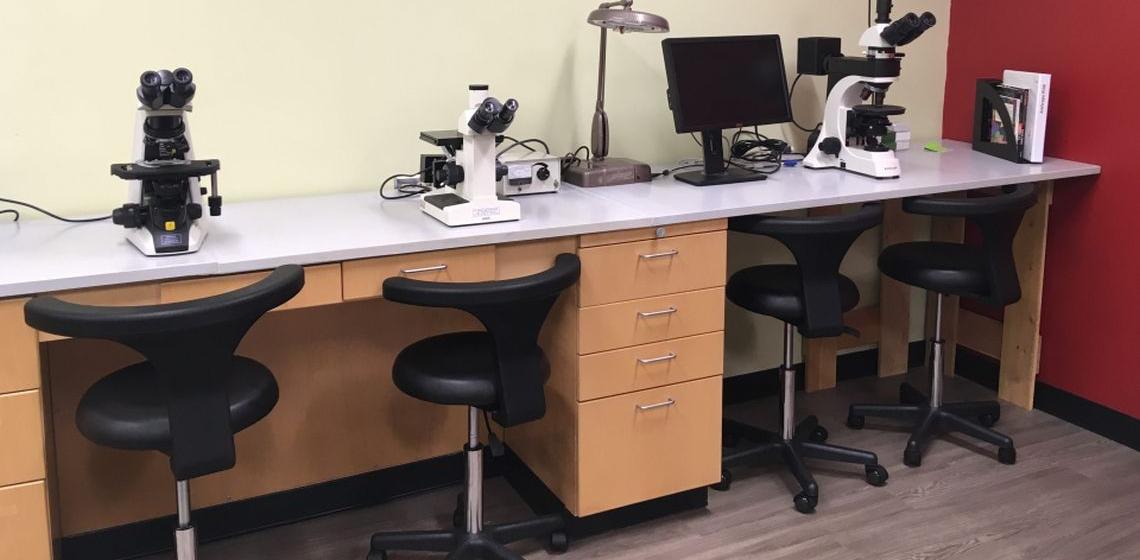
EASL is a research lab for the study of past cultures and materials through experimentation, scientific analysis and STEAM (science, technology, engineering, arts, and mathematics) education. All students and affiliates of the Cotsen Institute are welcome to use this space and its facilities.
The Experimental and Archaeological Sciences Laboratory (EASL) is a collaborative research space dedicated to the study of ancient materials and technology through replication experiments and scientific analysis. The lab assists students, faculty and Cotsen affiliates with their archaeological research projects, as well as offers resources for laboratory-based courses.
The lab was established in the second half of 2018 in what used to be the European Archaeology Laboratory (room A419) and officially opened in the fall of 2019. EASL currently houses equipment for the examination and analysis of archaeological materials, as well as for the replication of archaeological artifacts and technological activities. This includes:
- A traditional kick-wheel and a modern electric potter’s wheel for experimental pottery making
- A small electric kiln for experimental production of pyrotechnological materials like ceramics and faience
- A selection of microscopes, including stereo-microscopes, reflected, transmitted and cross-polarized light microscopes
- Sample preparation equipment for grinding and polishing of petrographic thin-sections and mounted samples, as well as hot plates and centrifuges
- Several portable X-ray fluorescence spectrometers for material analysis
Current Projects
Identification of Neolithic Pigments from Masis Blur
This project aims to identify raw pigments excavated from the Neolithic settlement of Masis Blur (7000–6400 cal. BP) in modern Armenia using techniques such as polarized light microscopy and pXRF. Once identified, the work will shift to determine how these pigments, and the spaces that they were found in, were used, and where the materials came from to provide information on craft specialization and long distance trade activities at Masis Blur. This project is a collaboration with Dr. Kristine Martirosyan-Olshansky, Director of the Armenian Lab at the Cotsen Institute and co-director of the Masis Blur Archaeological Project.
Analysis of Glass Production Debris from Petrie’s Excavations at Amarn
This project focuses on the examination and analysis of glass production debris found at Amarna, excavated by Petrie in the late 19th c. and currently housed at the Penn Museum. Different analytical techniques are being used to characterize the composition of the glass waste and identify the raw materials used in the production of vitreous materials at the site. The results will also help identify what stages of glass manufacture this archaeological evidence represents adding to the data collected so far on the Late Bronze Age glass industry in Egypt and the broader eastern Mediterranean region. This project is funded in part by the American Research Center in Egypt's (ARCE) Antiquities Endowment Fund (AEF).
Text & Image: EASL
